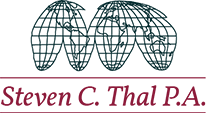As of today, October 8, 2020, a new Department of Labor (‘DOL’) rule will affect H-1B applications, decreasing their approval rates by an estimated 30%. Also released today is a new Department of Homeland Security (DHS) rule which will take effect 60 days from today. The new policies are issued as interim final rules, meaning they will take effect without first undergoing a public-comment and review process that is customary for such rules.
The administration also waived its typical regulatory review process before issuing the rule in order to be able to publish it faster. According to the DOL, the purpose of the new rules is two-fold: protecting foreign workers from being paid less than U.S. workers, and guarding against replacement of U.S. workers by lower-cost foreign labor. However, these new rules do not decrease the number of H-1B visas that are issued per year (85,000), they just make it more difficult for certain classes of workers to receive them.
Department of Labor 20 CFR Parts 655, 656: Strengthening Wage Protections of the Temporary and Permanent Employment of Certain Aliens in the U.S.
The DOL rule issued today relates to the computation of the prevailing wage required for labor certification. The DOL is not applying the new rule to any preexisting prevailing wage applications, and only to those filed on or after October 8, 2020. Those looking to renew their H-1B visas in the future will, thus, also be affected by this new rule. Employers that rely on Labor Certification Applications (LCAs) will see an immediate increase to the wages associates with each wage level. This will effectively increase the “required wage” associated with H-1B, H-1B1, and E-3 benefit requests.
What this rule does specifically is increase the prevailing wage levels that employers must meet when petitioning for an H-1B worker. Employers must pay H-1B workers the greater or the actual wage level paid by the employer to all other individuals with similar experience and qualifications for that specific employment. This wage level is calculated by the DOL and is called the “prevailing wage level for the occupational classification in the area of employment”. Depending on the type of work the occupation entails, employers apply for labor certification from the DOL at four different levels. There will be a significant increase in the prevailing wage determination (‘PWD’) for each level:
- Level I Wage: from 17th to 45th percentile
- Level II Wage: from 34th to 62nd percentile
- Level III Wage: from 50th to 78th percentile
- Level IV Wage: from 67th to 95th percentile
Department of Homeland Security Rule 8 CFR Part 214: Strengthening the H-1B Non-immigrant Visa Classification Program
The DHS’s rule revises the definition of “specialty occupation” and creates additional qualifications that employees must possess to be eligible for H-1B visas. The major changes are the following:
- Education requirements: Currently, foreigners with a college degree or the equivalent amount of experience can apply to work in what is known as a “specialty occupation”. Under the changes, an applicant must have a college degree in the specific field in which he or she is looking to work. A software developer, for example, wouldn’t be awarded an H-1B visa if that person has a degree in electrical engineering. That requirement could make it tough for technology companies to hire in emerging fields like artificial intelligence or bioinformatics, which combines biological data, computer science and mathematics. Experts in such fields may have studied other subjects, or degrees in some subjects may not have existed until recently. The only exception to this rule is for fashion models, who aren’t required to have college degrees.
- Employer-Employee Relationship: The new rules also aim to curb business arrangements under which an H-1B worker hired by one company works primarily at a second company. Those arrangements would receive more scrutiny in the application process. The changes target information-technology companies that rely on H-1B workers, mostly from India, whom they outsource to companies to work as on-site IT staff. The arrangement is common in several industries including human resources and consulting.
- Visa Validity period: H-1B visas are currently valid up to three years, with a potential for extension for another three years, then one year increments afterwards. The new rule limits the maximum validity of three years to only certain types of workers. Workers placed in third-party worksites will only have a validity period of one year and will have to renew annually.
